Nelson’s Spring Creek is a free flowing tributary of the Yellowstone River that originates from the Alluvial Fan Aquifer in Paradise Valley. Nelson’s flows north along the East side of the Yellowstone, while Armstrong and DePuy Spring Creek flow north on the West side of the Yellowstone. Armstrong and DePuy Spring Creek originate from a separate aquifer called the Yellowstone Aquifer. In the same way that Armstrong’s and DePuy’s are the same creeks with separate property lines, Nelson’s spring creek originates on the Dana property, flows .45 miles through Nelson’s property, and then back through Dana’s before it enters the Yellowstone River.
There are three main origins of the water to Nelson’s Spring Creek: a large pond spring, (located upstream on the Dana’s property), many channel springs in the stream bed, and several marshes or high water table areas, which seep into the creek. Most of the channel springs exist above Nelson’s on the Dana property. These can be identified wherever sediment from the stream bed is lifted up off the bottom as groundwater discharges from the Alluvial Fan Aquifer, giving the creek a “boiling” appearance. The water temperature is much colder, however, flowing from the ground at a constant 48 – 54°F (8.9 – 12.1°C) year-round. This is one of the key elements to abundant insect life and the rapid growth of the trout in Nelson’s Spring Creek.
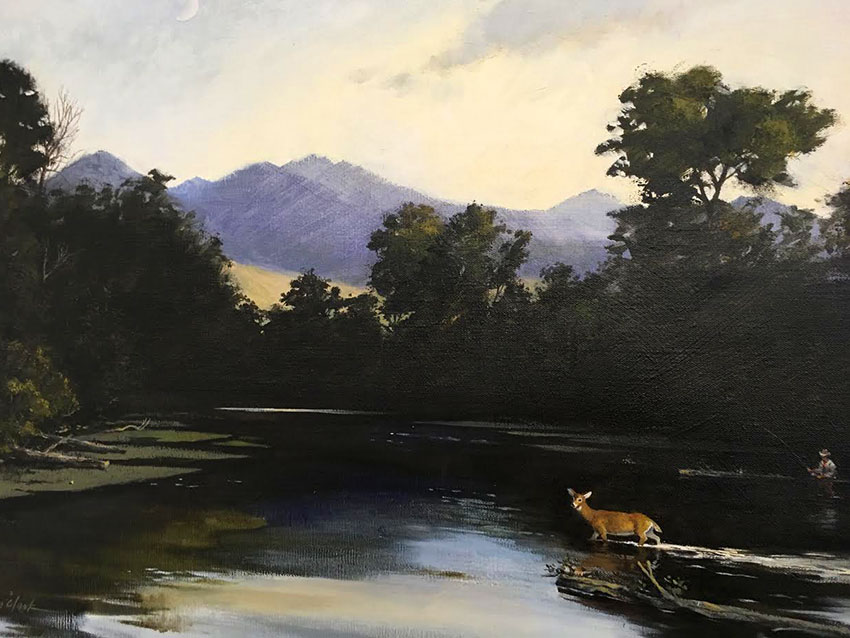
The turn off to Nelson’s Ranch is located approximately 6.5 miles south of Livingston, Montana, on the East River Road (540). If you you hit your odometer as you drive over Carter’s bridge the turn off to Nelson’s is almost exactly 4 miles. The entire length of the spring creek, from the top spring on Dana’s down to the Yellowstone’s riverbed on Dana’s is approximately 1.5 miles. Depending on the time of year however, the cool flowing spring creek water often travels 2 miles or more before hitting the Yellowstone, since many years later in the summer, the Yellowstone doesn’t have enough water to flow over to it’s eastern most channel that Nelson’s spring creek flows into.
The upper section which starts on Dana’s flows approximately .75 miles to the Nelson’s property line. The stream then flows another .45 miles to the lower end of Nelson’s property line, where the creek turns back into Dana’s. An old flume serves as a visual boarder between the two properties. From the flume down to the Yellowstone’s eastern channel is roughly .32 miles, or .88 miles to the main stem of the Yellowstone.
In addition to the spring creek, Nelson’s also offers a pond to fish as well as a B & B for guests. The pond is located just north .3 miles north of the main check-in area and is free to those who are staying at the lodge. A separate $50 fee is charged for fishing the pond, which is stocked with small rainbows and offers younger anglers or beginners a good opportunity to practice up before testing their skills on the creek. The lodge has 5 comfortable rooms with a large common area including a kitchen, dining area, and cozy fireplace. This is one of the nicest locations to stay in all of Paradise Valley, but be sure to book early as the lodge (and creek) are almost always full during the summer. To make reservations you can call the Nelson’s directly at 406-222-6560 or check out their online calendar for availability at nelsonsspringcreek.com. A 50% deposit is required at the time of the booking
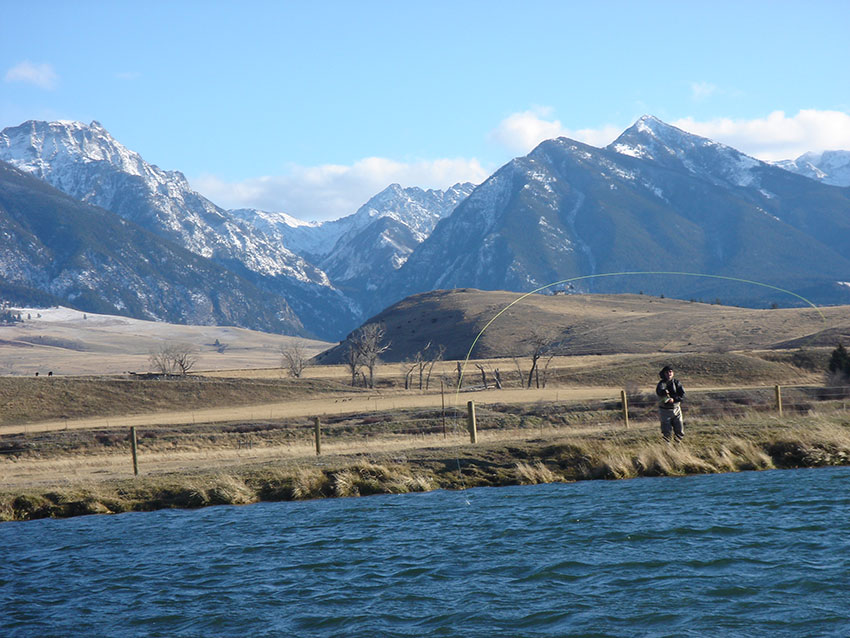
Like Armstrong’s and DePuy’s, the rod fee required to fish Nelson’s varies depending on the season. This sliding scale makes it more affordable for locals and others to enjoy the creek during the winter months. Rod reservations are limited to 6 rods per day on Nelson’s, which gives everyone ample elbow room. Rod fees are not available for the Dana’s portion of the spring creek, which remains private.
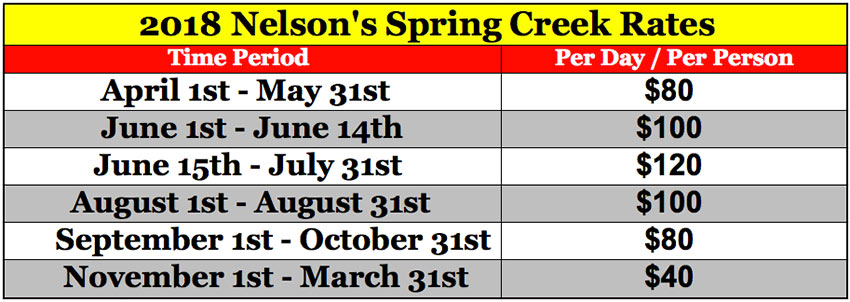
The world-renowned hatches on Nelson’s Spring Creek are truly impressive and something that every angler should experience at least once. Once you’ve experienced a great day of dry fly fishing, however, you’ll want to come back every year – hence all the rollover dates we see year to year, especially during late June and early July for the famous PMD (pale morning dun) hatch.
Midges are the main staple through the winter months, however, midges emerge on the creek year-round. Some of our best all-time patterns on Nelson’s Spring Creek are midge larva in black, olive, white, and red. These can be nymph fished alone or behind a larger nymph, as well as fished behind a dry fly. If you are fishing midge dry flies, some of our favorite patterns include René Harrop’s CDC Hanging Midge and his CDC Gray Midge Adult in size 20. The Hanging Midge has a white tuft of CDC that is easier to see than other midge patterns.
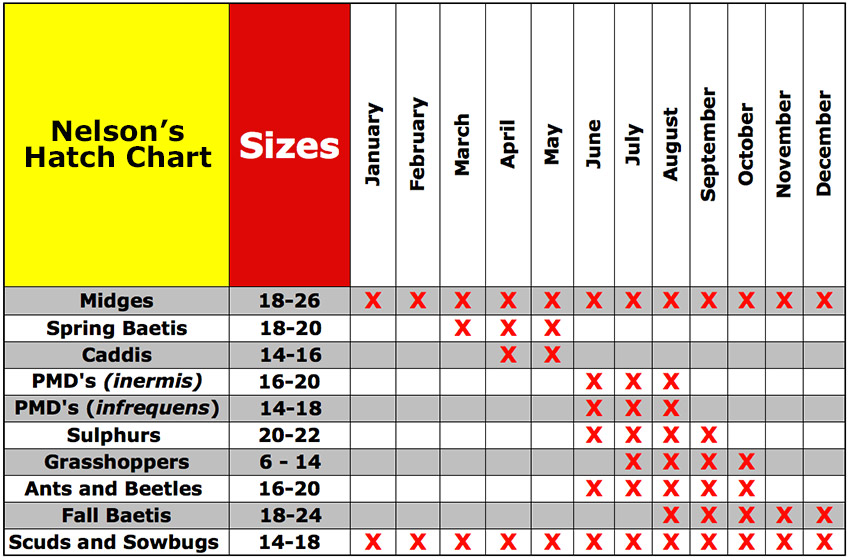
Spring baetis hatches start in March, which is a wonderful time to be on the creeks. The fish have been used to eating midges all winter and seem to welcome these larger, meatier may flies as soon as they start to come off. There’s a lot less pressure on Nelson’s this time of year, which generally means more takes and fewer refusals. Spring baetis typically range in size from #18-20, with a greyish/olive body and a grey wing. Some of our favorite patterns for spring baetis include René Harrop’s Short Wing Grey Baetis Emerger, Harrop’s No Hackle, Harrop’s Baetis Sparkle Dun, and Dave Student’s Thin Baetis Nymph.
Following spring baetis as we get into late April we’ll see Mother’s day caddis, Brachycentrus occidentalis on the river. We do see some caddis hatching in the creek, especially on lower Dana’s, but not as many on Nelson’s. Of all the creeks, DePuy’s probably has the strongest caddis fishing, likely due to it’s close proximity to the Yellowstone River (as spillover caddis often fly to the creek and lay their eggs in the creek).
Mid-June through mid-July is one of the best times to fish at Nelson’s Spring Creek. It is also one of the hardest time periods to get on since there are so many “roll-over” dates and very few if any openings. This is when the epic PMD hatches are coming off and the creek starts to boil with rising fish. There are two species of PMD’s that hatch on Nelson’s. The first PMD’s of the year, Ephemerella infrequens, are larger in size, (#14-18) and typically emerger mid-June to early July. The second species of PMD’s, Ephemerella inermis, are smaller in size, (#16-20) and come off mid-July, continuing, (although thinning), through August.
Witnessing the PMD hatch on Nelson’s is something special, to say the least. If you have never had the chance to fish Nelson’s during this time period you should ask the Nelson’s about open dates (even years ahead of time) and even get on their cancellation list if possible. It wouldn’t hurt to stay at their lodge either, as last-minute cancellations do occur. The $120 rod fees may seem expensive at first glance, but the quality of the fishing experience – which translates directly to great memories – are well worth it.
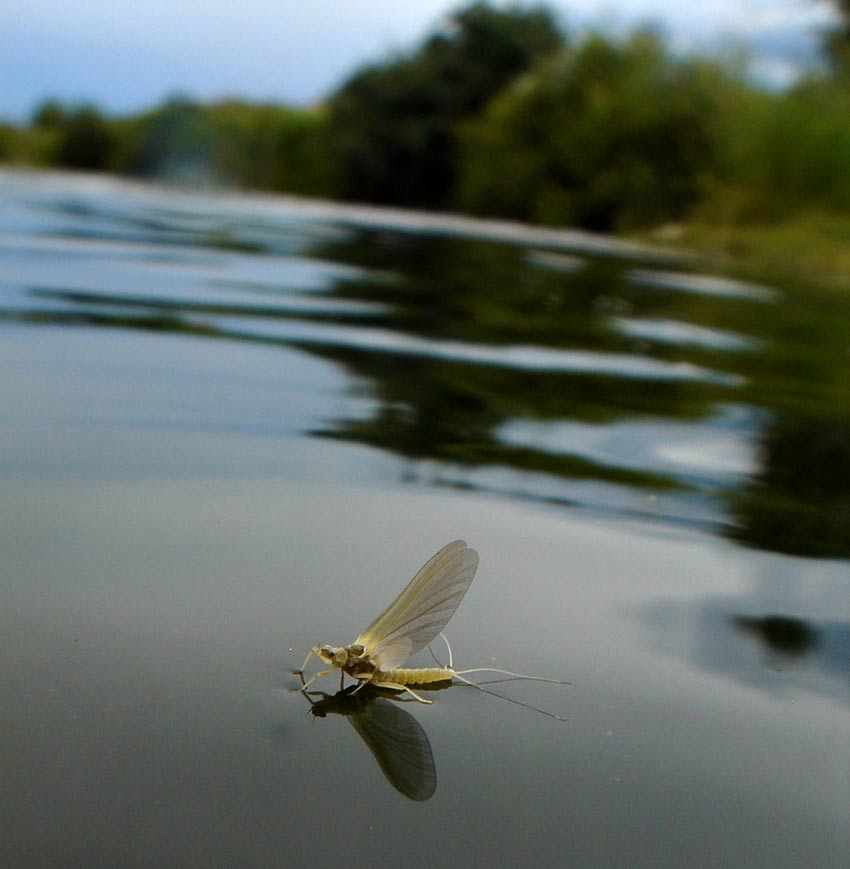
As PMD’s continue into late July and August we’ll see summer baetis start to emerge, usually in the afternoon around 4:00 PM. Locally these mayflies are referred to as sulphurs, (also spelled sulfurs). Although sulphurs are a type of baetis, they are light orange/yellow in color with light-colored wings and are much smaller than the sulphurs found on Eastern streams and rivers. Here in Paradise Valley, natural sulphurs are typically size #20-22, however, guides will often fish a larger size dry, (even #16-18), particularly when fishing dry/dropper rigs. Fishing a sulphur nymph from June to September (any time of day) is a good idea as most anglers are fishing PMD’s then.
Aside from the predictable and prolific midge and mayfly hatches on Nelson’s Spring Creek, there are also a plethora of scuds and sowbugs for fish to feed on year-round. These are choice food items for trout as they are high in protein and easy for the trout to catch. They will often work as good if not better than other nymphs. The scuds in Nelon’s have an olive/greyish tone to them while the sowbugs are more of a dull grey. The scuds range from size #14-18, while the sowbugs are a little smaller, more like #18-20. If you happen to be fishing the creeks and don’t see much going on for hatch activity, nymph fishing with a scud or sowbug can be very effective. Fishing a midge pupa or midge larva on a dropper behind the scud is often the best way to go.
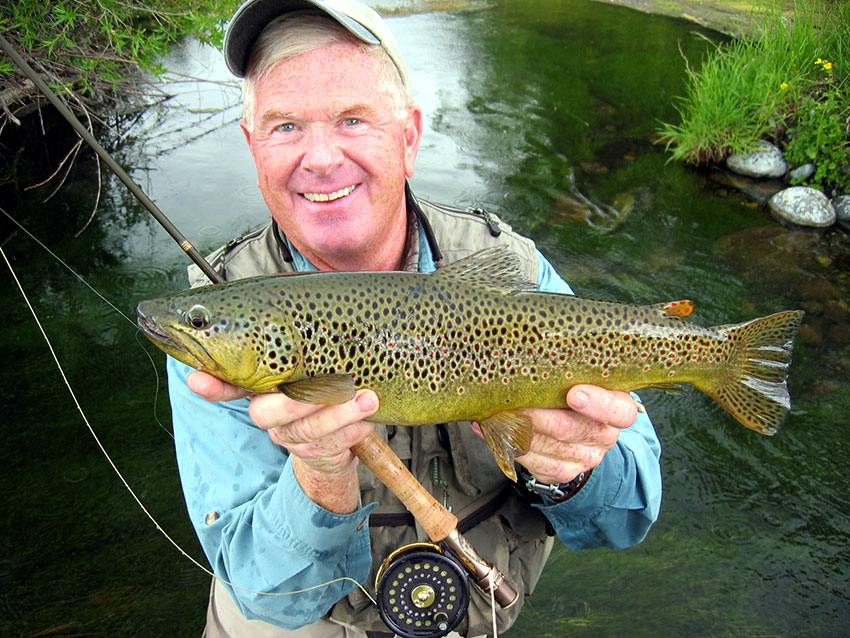
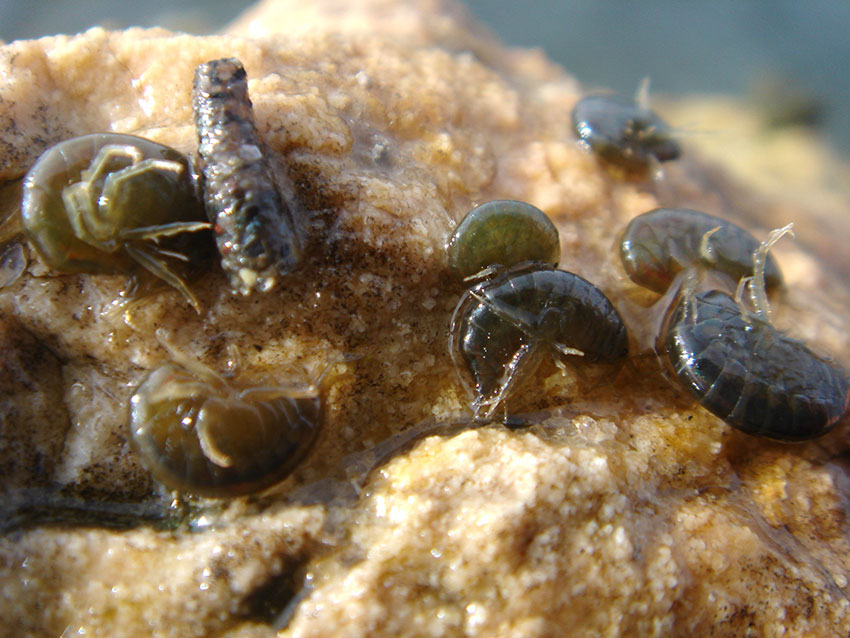
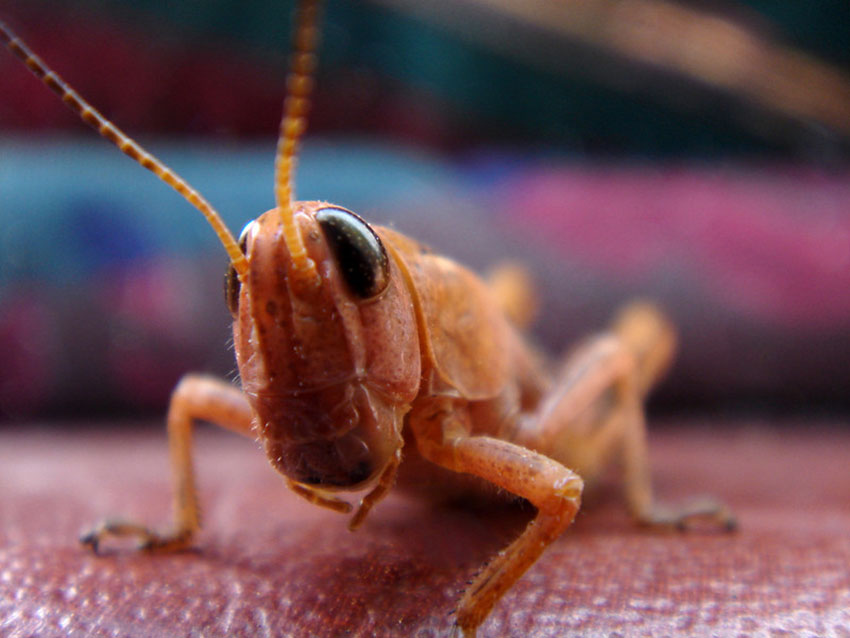
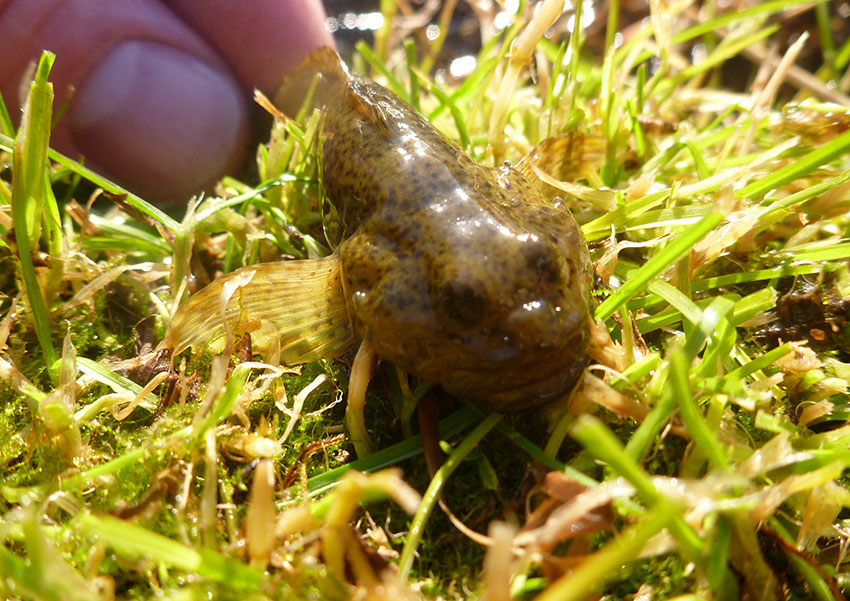
Terrestrials are also an important food source for the trout in Nelson’s Spring Creek. Hoppers, crickets and especially ants and beetles are some of the best dry fly patterns to fish when the hatches are slow or nothing appears to be emerging. In the flat water on the upper part of Nelson’s, a small black ant will often bring up fish when nothing else will work. In the middle and lower section of Nelson’s hopper patterns work better with all the vegetation along the banks. The main months to try terrestrials are July, August, and September however ants and beetles can work in June and even as late as October and November.
If you take the time to flip over a few rocks in Nelson’s, you can find stonefly nymphs, cranefly larva, as well as sculpins. We fish these nymph patterns occasionally, mostly in the faster riffles and runs. For the most part, however, the fish get keyed into the insects that are hatching. When there are no hatches and nothing appears to be happening, it is worth trying some of these oddball patterns. The browns are especially aggressive near dark and on the lookout for sculpins, other baitfish including small trout. Putting on a small streamer or wooly bugger near dark can often produce some exciting takes, especially from big browns. A mouse pattern near dark can also be deadly.
At Nelson’s Spring Creek you will be catching mostly browns, rainbows, cutthroat, and cutbows. Most of the fish in the creek are between 12-16 inches, with trophy size fish in the 20-23 inch range. Nelson’s famous for having some of the largest resident brown trout of all the spring creeks, which love to hide under the logs during the day. Catching these log dwellers can be very difficult, even if they are rising, since the current rebounds off the logs, making it extra tricky to get a perfect drift with a dry fly or emerger. And once you hook them, landing these big browns or rainbows on 6X and 7X tippet is a real challenge.
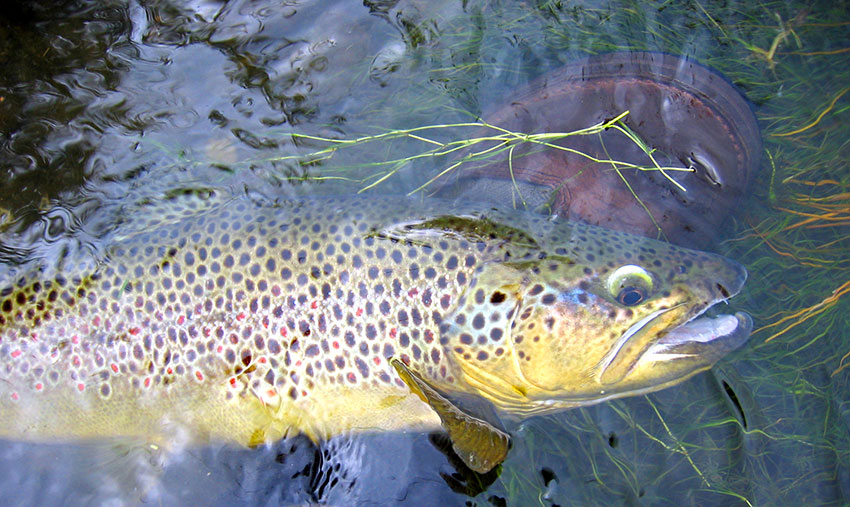

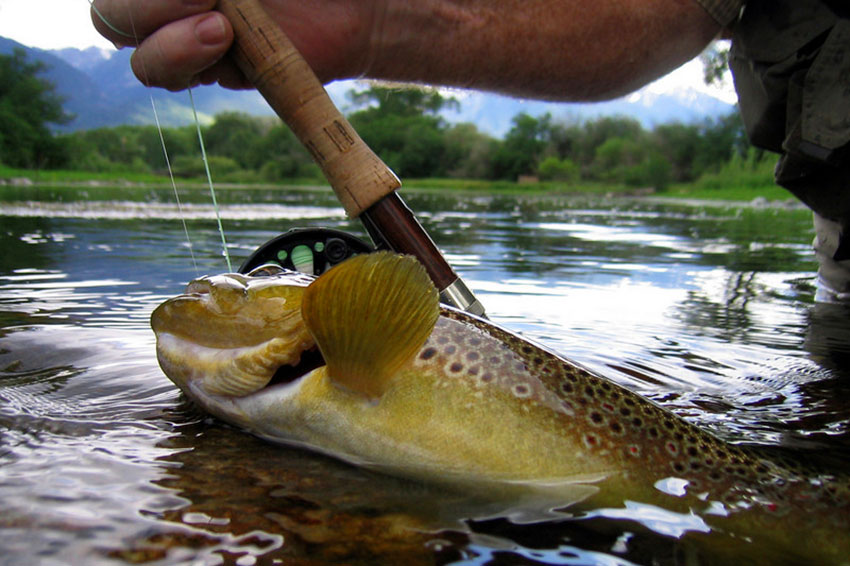
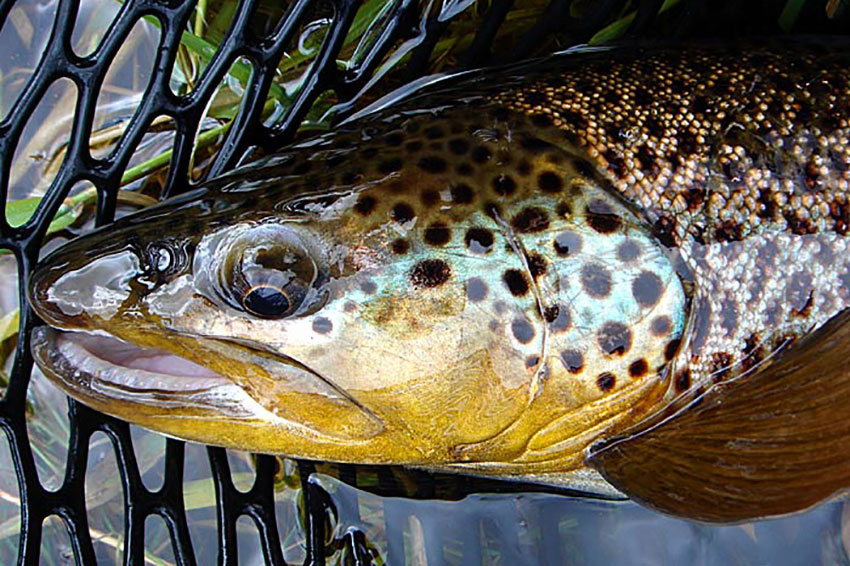
Although there is an active fish hatchery on the Nelson’s property, all of the fish in the spring creek are wild fish and are not stocked. The trout in the creek take on brilliant colors from the spring creek environment and look much different in appearance from the trout found in the river. Many experts attribute these richer colors to come from the fact that the spring creek runs through Limestone, rather than through quartzite, sandstone, or gneiss. Empirical evidence shows that Limestone, (which is composed primarily of carbonate, dolomite, calcium magnesium carbonate, or marble), not only makes the fish look more vibrant but also makes them grow faster as a result of more consistent insect hatches. Whatever the reason, each fish in Nelson’s looks absolutely amazing and is a trophy regardless of its size.
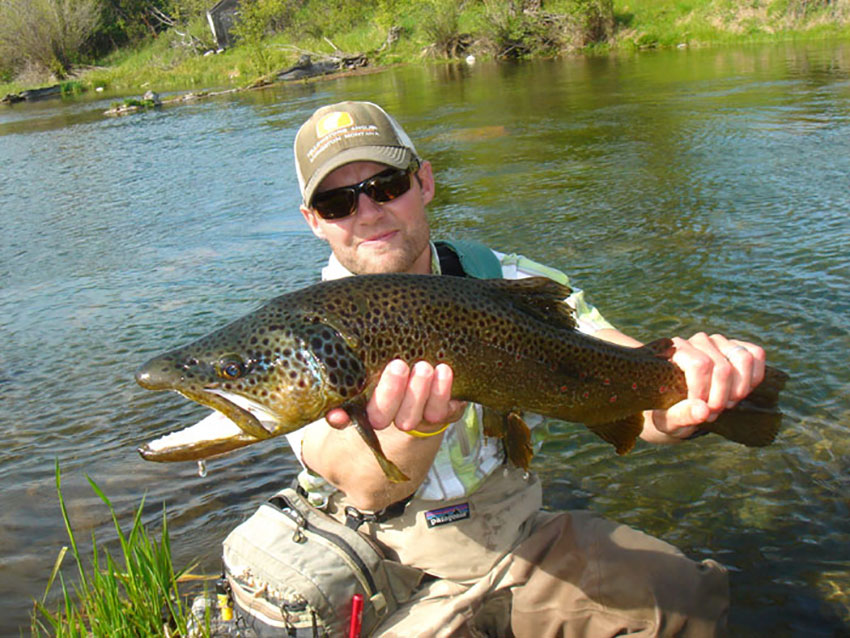
Sometimes we hear stories about anglers feeling intimidated by the spring creeks because they are “too technical.” This does not need to be the case! While the spring creeks do require a set of fishing tactics and skills, many of these can be learned in a day, with one of our top guides. Even a novice can expect to catch several fish with the help of a guide, and expert anglers fishing on their own can expect to hook a dozen fish or more per day. An average angler accompanied by one of our Montana fishing guides will often hook 10 or more fish on their first day, landing 4-6 of them.
Although the creeks are primarily fished with dries or a dry/dropper combo, there are many days where sight nymphing without an indicator, is absolutely deadly. Sight nymphing is also a lot of fun since you watch the trout as it opens its mouth and sucks your nymph in. Follow this with a quick hook set and you are in business. All the spring creeks encourage anglers to fish with barbless hooks. Fishing with bait or traditional spin gear is not allowed on the spring creeks.
Usually, the most productive days to fish dries are on cloudy, calm days when the hatches are heavier. It’s nearly impossible to plan for these days however, so you’ll just have to keep coming back and trust to luck. On sunny days, you may have to do more nymph fishing but good sun helps when you are sight fishing. The more days (and years) you fish the spring creeks the more chances you’ll have for these perfect conditions to present themselves. The good news is these perfect days exist during each season, so you might have an epic midge dry fly day, an outstanding baetis day, or a perfect PMD day. When conditions are right, it seems like every fish in the creek is up, happily eating dry flies.
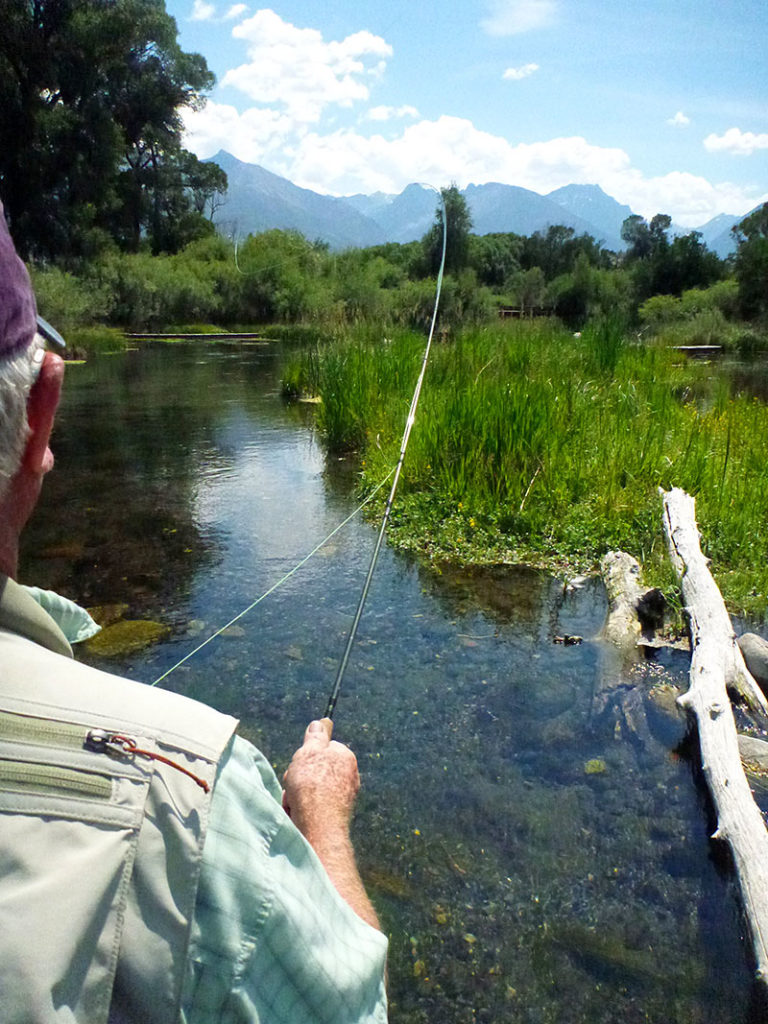
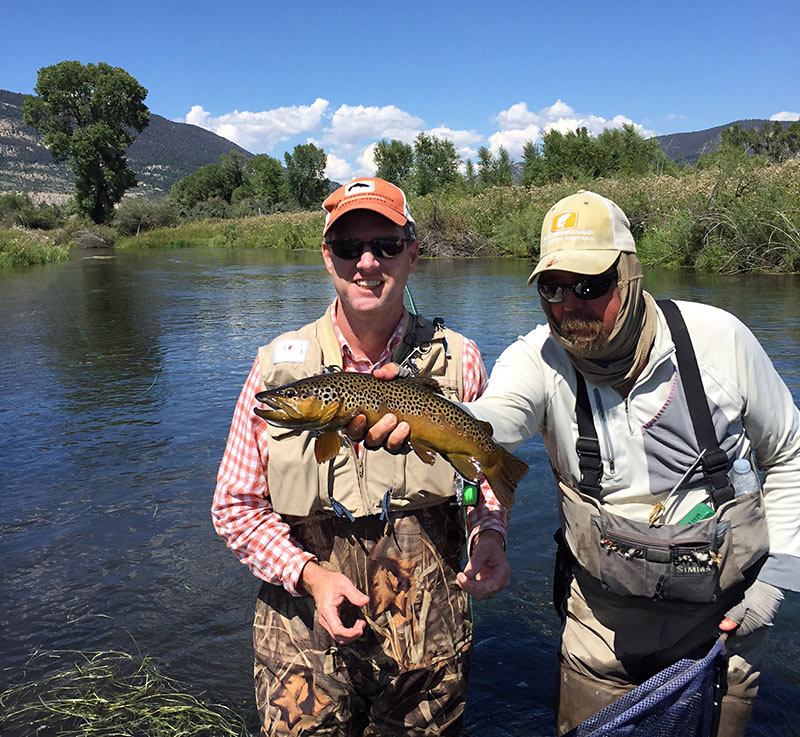
Your best chance to be successful the first time you fish the spring creeks is to hire a guide. Even if you are an expert angler, it helps to know the best approach to each spot, the correct flies to be using, and of course someone to help you net that huge fish that has run into the weeds after hooking it. Since the microcurrents on Nelson’s are tricky, hiring a guide can be worth its weight in gold. The Montana fly fishing guides we book are all seasoned veterans on the creeks and are able to get even total beginners into fish. The techniques they teach you will not only make your day more successful on the spring creeks, but the same techniques can also be put to good use on the many other streams you fish.
The middle section of Nelson’s starts at the main parking/picnic area, going up to the first duck blind/corral area. Some of the best runs on the property are located directly across from the main parking area. These runs are deep, with fast-moving water and plenty of bushes that make provide ideal holding lies for big trout. The faster currents here offer some of the best sight nymphing on the entire creek. At first, the fish may be difficult to see, but if you take your time and wait for a clear window you will be able to see them.
Above this faster water, there is a slow section with several skinny rock jetties that anglers can walk out on and fish from. The fish in these areas after often rising and will happily eat dries. The tricky part is they are very spooky, so you cannot just walk out on the jetty and start fishing as you’ll spook all the trout immediately! By approaching keeping low, and then fishing from a kneeling or crouched posistion you will have much better luck. We also know anglers who will wade out slow in the water, and kneel in the water if they can, to keep a low profile. This is another spot where 6-7X is required. In general, a down and across drift works best in this section.
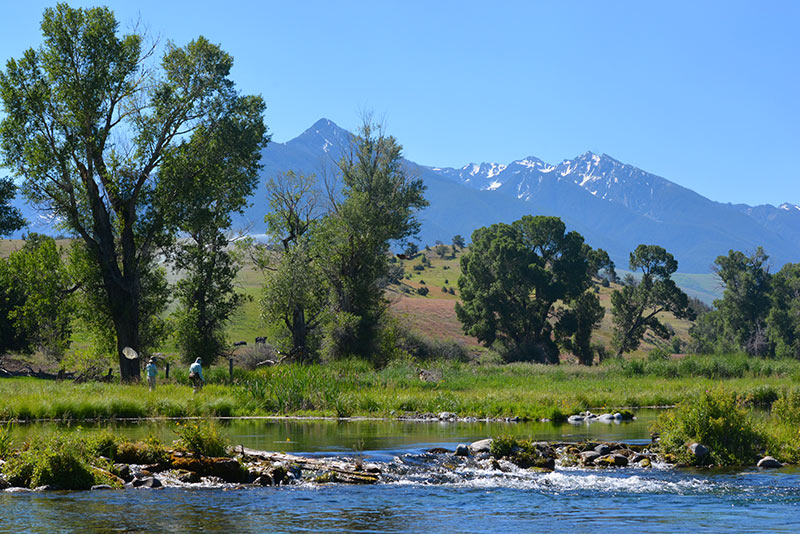
Lower Nelson’s consists of the parking lot area down to “the flume,” which is the lower property line before Nelson’s flows back into the Dana portion of the spring creek. This short section has several fun riffles as well as some excellent moss lanes that hold large fish in the summer. We’ve also seen some big fish holding in the shade of the flume on hot summer days. Hooking these brutes on a tiny dry is one thing, landing them before they dive into the weeds is another story!
In addition to the main creek, the lower section also has a couple of ponds near the main house as well as a canopied section of the stream that flows out of the fish hatchery lanes. This canopied portion of the creek is only a hundred yards but often holds some very nice fish. It presents some casting challenges, but it is certainly worth taking a look at on a bright sunny day.
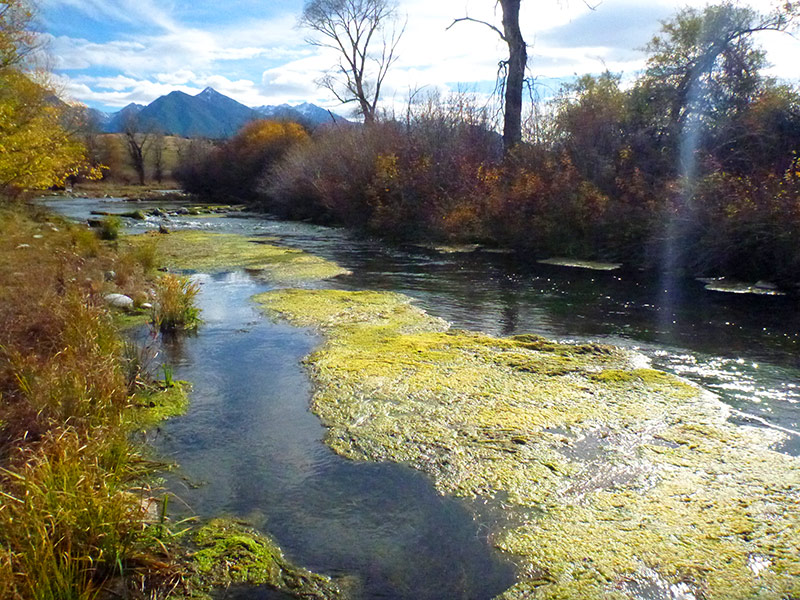
Aside from the Spring Creek, the Nelsons also have a pond on their property stocked with rainbows from their hatchery. The pond is free for anglers who are staying at Nelson’s, otherwise, the fee to fish the pond is $50 per rod / per day. These fish provide novice anglers the opportunity to practice their casting, hook setting, and fish playing before heading out to test their skills on the main creek. While the fish here are not huge, you might catch one in the 15-16″ inch range. Most of the fish are in the 8-12″ range and are more than happy to come up and eat a dry, nymph, or streamer. The background views to the pond are amazing, with the Absaroka mountains towering above.
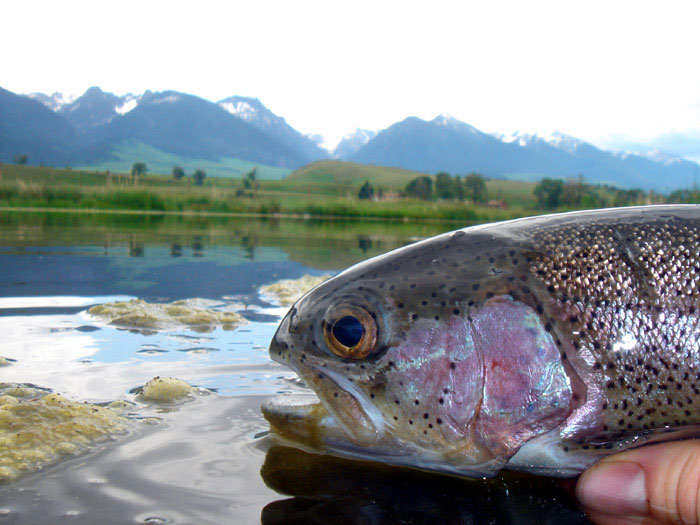
The best rod to bring to the spring creeks is a 3-weight or a 4-weight. A 3 or 4-weight rod will not only make a more accurate and delicate presentation than a 5-weight or 6-weight rod, but the thinner line also allows you to make more delicate presentations and get a better drift. In addition to a more flawless drift, a 3 or 4-weight rod does a better job protecting light 6X and 7X tippets.
Some of our favorite rods for the spring creeks include the Sage 389 LL, the G.Loomis NRX LP 8’8″#3, the G.Loomis NRX LP 9 ‘#4, the Tom Morgan Rodsmiths 8’#4, the Hardy Zephrus 8’6″#4, the Winston BIIIx 8’6″#4, and the Winston BIII LS 8’6″#3. All of these rods have fantastic feel and would be the perfect tool to have in your hands at any of the spring creeks.
You can also check out our 4-weight shootout to have a look at other 4-weight rods.
A standard click pawl reel works very well and our favorites are the Ross Colorado LT and Galvan Brookie. These are reels you must palm to apply more drag pressure. Most anglers prefer a light reel with a smooth, adjustable drag. The trout here do not run very far, (although the may take you into log jams, weeds, or rocks to break you off). One of our favorite freshwater reels is the Galvan Torque. They are light yet durable and have one of the widest ranges of drag of any reel on the market. This means you can really dial in your drag for 5X to 7X tippets.
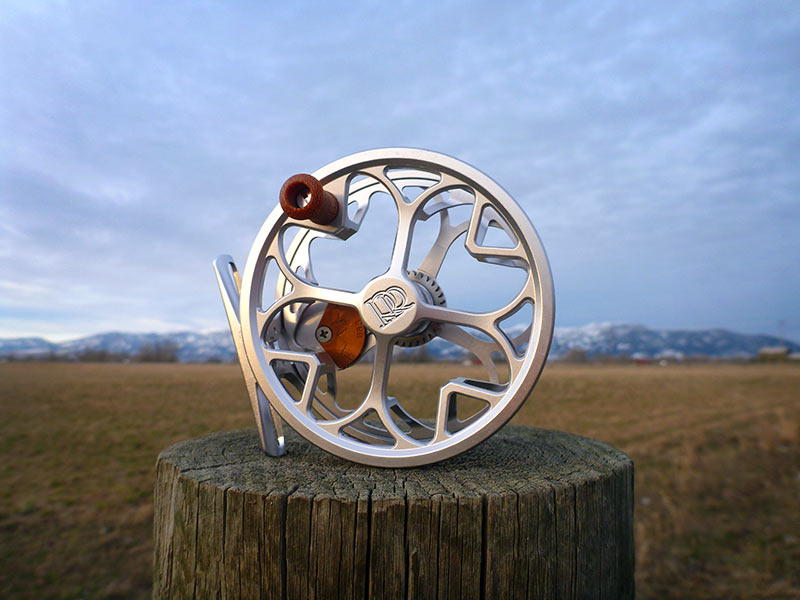
Check out the 5 weight Reel Shootout to see why the Galvan Torque won. Of course, for a 3 or 4 weight rod, you’d want to get a T-3 or T-4 size instead of the T-5.
For lines, you can choose to fish either double taper lines or weight forward lines. Many people like the feel of a double taper line on the softer rods listed above (the Sage LL, Tom Morgan, and Winston rods) and a weight forward line on the faster rods listed above (the G.Loomis NRX LP, Hardy Zephrus, and St. Croix Imperial). For the softer rods, a more standard WF line works best, like the SA Trout. While some anglers may tell you only a drab color line like olive or dark grey will work better on the spring creeks, we know from experience that bright optic green lines and even bright orange lines work as well, especially when you are using long 12-foot leaders. For double taper lines, we like the 406 DT fly lines. For weight forward lines our favorite is the Scientific Anglers Mastery Trout lines.
We are lucky to be one of three fly shops in the US to carry René Harrop patterns, tied by them personally. These flies, whether you choose a nymph, short wing emerger, sparkle dun, comparadun, no hackle, or spent spinner, are the highest quality flies you’ll find anywhere in the world. Each fly is shadow box quality and more durable than the typical import flies. Many customers who are unfamiliar with these amazing flies raise their eyebrows at the $3.95 per fly price tag, but they are worth every penny. Those in the know buy as many as they can while we still have them in stock, since we are very limited in the number we can offer for sale each year
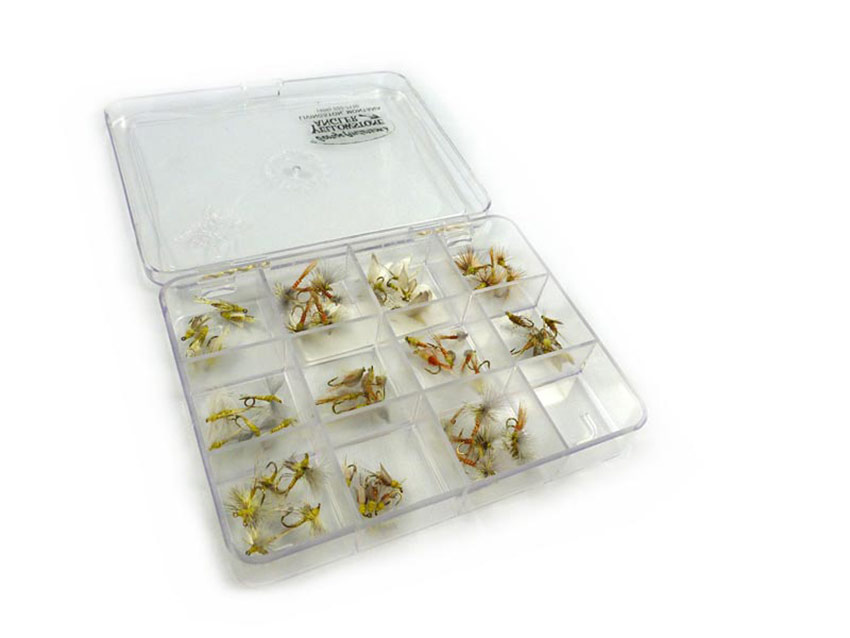
Again, we highly recommned getting a guide your first couple times fishing the spring creeks, but if you would rather try fishing on your own, stop by the shop and we can get you a map as well as a few of the flies that are working for that time. We are always happy to help anglers pick out the right flies, and we will take the extra time needed to get you set up right and insure you have a fun and productive day on the water.
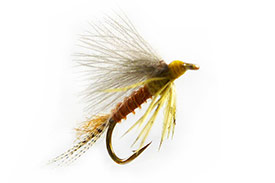
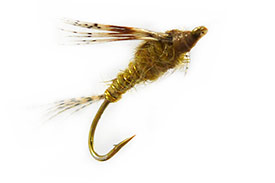
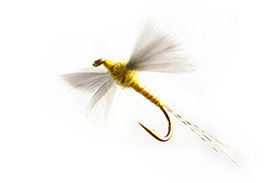
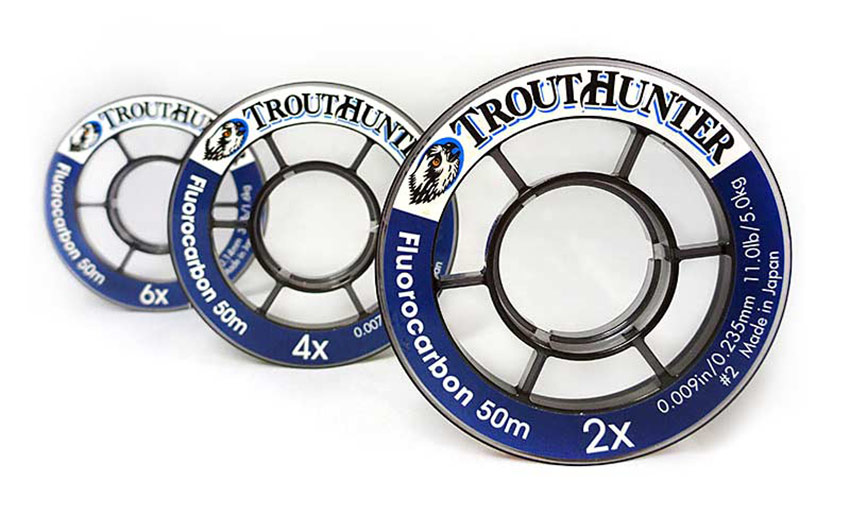
During the winter fishing nymphs, leeches or streamers you can often get away with 4X tippet. When insect hatches are occurring – spring through the end of September, you’ll need to go down to 5X, 6X and even 7X to get better drag free presentations. We know some anglers who even fish 8X, however many of these fish hooked are lost in the weeds and with a fly still set in their mandible. Most of the time strong 6X and 7X fluorocarbon tippets are the way to go. We don’t encourage using 8X as it takes most anglers too long to land the fish, which can have a negative effect on its survival.
Since the spring creeks are so clear, we prefer to use fluorocarbon tippet rather than monofilament tippet. Yes, they are more expensive, but they are more invisible underwater. TroutHunter or Seaguar GrandMax are our two favorite brands for fluorocarbon because they are extruded with a double structure fluorocarbon. The inner fluorocarbon is very stiff and gives you your tensile strength while the outer fluorocarbon is softer, allowing you to tie better knots than don’t cut through mono or into the fluorocarbon itself. For more information on tippet check out our Tippet Shootout.
For leaders, we recommend either a standard 12′ 6X Rio knotless leader, or one of our Yellowstone Angler hand tied 12′ 6X leaders. These are tied with nylon tippets, but we have found that using a fluorocarbon tippet like Trouthunter works even better. Using two to three feet of fluorocarbon tippet allows for better presentations, getting the fly and tippet to move more freely with the tiny micro-currents we often find on the spring creeks, giving you a better drag-free drift.
If you plan to use three feet of fluorocarbon 6X tippet, yet have a 12-foot leader, the easy way to do this is to buy a 9′ 5X monofilament (co-polymer) leader, then add in the 3 feet of fluorocarbon tippet, ending up with a 12-foot leader. Expert casters may be able to handle even longer leaders in the 14 – 16-foot range. Once your tippet decreases to below 15-20 inches, (from changing flies or a break-off) you should take the time to tie in another 36″ section of tippet in order to get a better drift.
In the cold water of the spring creeks, most anglers choose to wear waders, even during the middle of the summer. Younger anglers or those with thick skin might choose to wet wade on a hot summer day. Typcially you will only be standing in knee deep water, but occassionally, especially when crossing the stream, you might find yourself wading beyound your waistline. If you did not bring waders with you, we offer wader and boot rentals at the shop.
A good pair of felt or Vibram sole boots are the key to safe wading at the spring creeks. The rocks can be very slippery, especially in the late summer and fall. Older anglers may feel more confortable fishing with a wading staff.
As always, be sure to clean and dry your boots and waders the best you can when going from one watershed to the next. Even if you are on the Yellowstone one day, and the creeks the next, it is best to wash your wading gear in order to avoid the spread of ANS (Aquatic Nuisance Species).
We encourage anglers to bring along a landing net. This will allow you to land the fish faster as well as provide a safe spot for the fish while you take the fly out. The best nets of today have a rubber bag rather than a cloth bag. These rubber nets also take less fish slime off of the fish (and also won’t smell later in your car). You can choose a net sits on the back of your vest, or you can choose a longer net that also doubles as a wading staff. The advantage of a smaller landing net is that it is always ready. Most anglers will connect these to their vest or jacket with a magnet, to make the quick release and re-docking easier. Some of our favorite nets are by Fishpond. These nets are made from carbon fiber and will never break. They also use some of the best lightweight softer rubber netting.
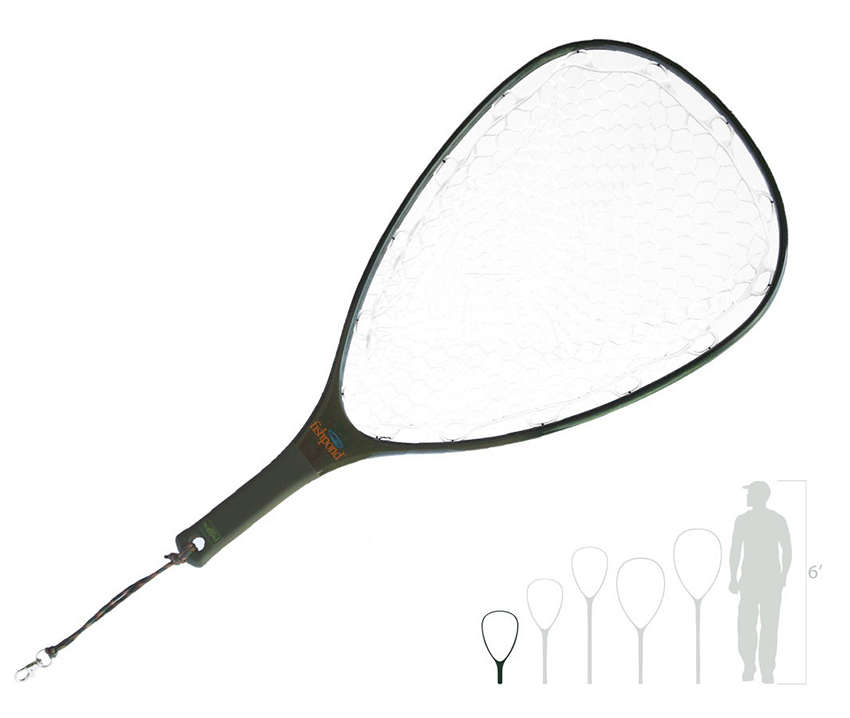
These may seem obvious to most anglers, but having a good pair of polarized glasses and a hat with a brim to block the sun is often the difference between seeing the fish and not seeing the fish. For lenses, we like copper, brown or amber-colored lenses best, as they give you more contrast and make it easier to spot fish than grey or other colored lenses. On the high end, brands like Costa, Smith, and Maui Jim offer some of the best optics. Many of the best sunglasses sell for more than $200, but for a serious angler, they are worth their weight in gold. We also stock and sell a lot of Suncloud polarized glasses in the $50 range, as well as Fisherman Eyewear glasses that range in price from $15-$30.
Since fish on the Yellowstone River can freely enter and leave DePuy’s Spring Creek, a Montana Fishing license is required by law. You can purchase one at the Yellowstone Angler (or anywhere else that sells Montana fishing licenses). You can also purchase one on-line here.